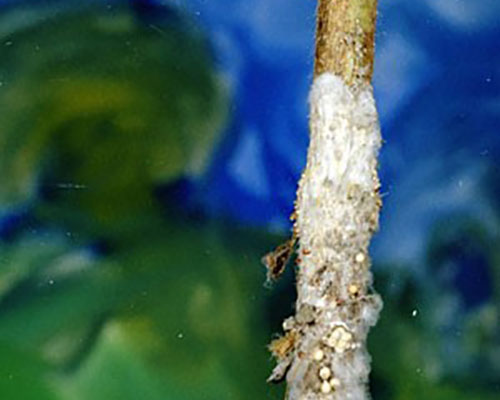
Melinda’s Garden Moments is heard Mon.-Fri. at 7:45 and 10:45 a.m. and 4:45 p.m. on WHAV.
Crown rot, southern stem rot or southern blight are different names for the same disease. Infected plants develop yellow leaves that eventually collapse and die. A close look at the crown of the plant reveals rotting tissue.
Crown rot lives in the soil and makes its way into new areas on flowing water or contaminated soil, plants and tools.
Remove and destroy infected plants as soon as they are found. Dig out and replace the soil around the infected plants at least eight inches deep and six inches beyond the infected area. Be careful not to drop infected soil onto other parts of the garden.
Sterilize tools for ten minutes in a one-part bleach to nine parts water solution.
Leave southern blight infected gardens fallow for at least a year. Or solarize the soil for 2 to 3 months in the summer to kill this and other disease organisms.
A bit more information: You may also notice coarse cottony webbing at the base of the plant and on the surrounding soil during periods of high humidity. See Missouri Botanical Garden’s Crown Rot of Perennials for help identifying this disease.
Myers’ website, www.melindamyers.com, features gardening videos, podcasts, monthly gardening tips and much more.

